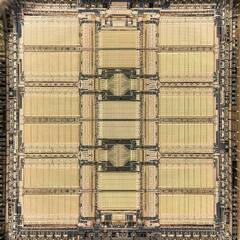-
Posts
26 -
Joined
-
Last visited
Awards
This user doesn't have any awards
About Ariyala
- Birthday December 16
Profile Information
-
Gender
Female
-
Location
Vancouver, Canada
-
Occupation
Principal Software Engineer
Recent Profile Visitors
248 profile views
Ariyala's Achievements
-
The problem is, we want to upgrade to the Unifi Dream Machine, and that unfortunately does not physically fit in where the ISP Router is located. Is there any way to block access to the Moca interface with the ISP Router in bridge mode?
-
Hi everyone, in our house we have fiber internet that comes in via the actual fiber cable. So we have to use the ISP provided router to go from the fiber cable to ethernet. Since we use a Unifi router we put the ISP router in bridge mode and let the Unifi router handle everything. Now we'd like to move the Unifi router to a different location in our house, away from where the ISP router is located. And since we have coax cables all throughout the house we figured we could use those to connect the Unifi Router to the ISP Router via MoCa (GoCoax). We are not using the coax cables for anything else and they will only be connected to the ISP and Unifi routers, nothing else in-between. Fiber cable from the street --> ISP Router (Bridge Mode) --> MoCa A --> MoCa B --> Unifi Router --> Rest of the Network Our main concern is that the MoCa admin interface would be accessible from outside - would it be? Or does the ISP Router still prevent that, even if it's in bridge mode? I guess someone accessing the Admin interface wouldn't be the end of the world, since nothing else is on the coax/ethernet before the Unifi router .. but it still feels weird Ari
-
I found this thread in another forum where they are discussing a similar control method for a slightly older version of my HRV: https://cocoontech.com/threads/control-of-broan-venmar-hrv-or-erv-info.28397/ So I think there is a chance that it still just uses resistances I guess I could just try it with a resistor and see what happens, right? How do I calculate the resistor needed to go from 12V to something like 0.9V?
-
Thanks a lot for the great help so far everyone, I am learning a lot Going on a tangent, I was thinking: I could probably also mimik what that controller does, instead of just pressing the button, right? Those three large circles are where this controller gets hooked up to the HRV System. By pressing the button I can cycle between Off, Low and High. I did some measurements with the multimeter, between circle 1 and 3 it shows 12V. Between circle 1 and 2 it shows 0.9V when set to High, 0.6V when set to Off and 0.2V when set to Low - all values fluctuating a little bit up and down. So I guess this means Circle 1 is GND, Circle 3 is VCC and Circle 2 is some kind of signal. It's a bit weird that the value for off seems to be in-between low and high though, doesn't it? Would I be able to simulate that by basically just putting a resistor between my own Circle 1 and 2? Or how does this stuff work?
-
I don't really have access to the internals of the HRV, only to the external ports where the controller from my pictures is wired into. So I have no real way to check if something in there gets too warm
-
Oh I see, right that makes sense. Thank you both, I'll give this a try tomorrow
-
In this picture I measured the Voltage between A and B with a Multimeter. When the button is not pressed it measured 3.3V. When I press it the measurement is 0V. That means the button is a NC (normally closed) button, right? If so, no matter what I do on a parallel wiring to A and B, there is no way for me to stop the flow through the switch, or am I missing something? The Power Supply is inside the HRV (Heat Recovery Ventilator) system that this Controller is connected to. The 110V power supply of the HRV itself can most likely handle the few extra watt of an Arduino or ESP, but how do I know if whatever they use to convert to 12V for this controller can also handle it? Or any other circuit along the chain?
-
Also, I forgot to mention - that Controller is powered by 12V. So technically I could use that 12V to power my Arduino/ESP, but since I don't know how much draw is allowed, I am hesitant to do that :/
-
What if I were to use an ESP8266? Since I don't know how much I can safely draw it'd still be safer to use a separate circuit with an Optocoupler, right? Oh, how would I do that? Wouldn't the button still let the 3.3v through, no matter what I do in my parallel wiring with the Optocoupler?
-
Hey, I have a controller that has a button to toggle the state of the device it is connected to. Now I's like to use an Arduino to control the device instead, and figured the easiest would be to just simulate the button press on that controller board. The button two sides of the button when not pressed have 3.3v, if I press it that goes down to 0v. I have no clue how much amperage the device allows to be drawn by the controller, so my plan was to use an Optocoupler and have my Arduino use it's own power source, instead of powering it from the controller. Does that sound reasonable and make sense? Also, is there a way to simulate the button press AND have that actual physical button still there and work? I guess not since it cuts the voltage when pressed, right? If it were the other way around where there is no voltage when not pressed, and only if pressed - then it would be no problem .. Amy help or tips would be welcome, I am still new to electronics Cheers, Ari
-

Why are the wires for 5V/10A LED strips that flimsy?
Ariyala replied to Ariyala's topic in Hobby Electronics
Oh I see, that makes a lot of sense - thanks a lot for that great explanation! Regarding the melting wires part: If I wire it all up, turn it on full brightness and then nothing gets warm to the touch after a few minutes, then all is good, right? -

Why are the wires for 5V/10A LED strips that flimsy?
Ariyala replied to Ariyala's topic in Hobby Electronics
Oh, so the shorter the wire - the thinner it can be? I always thought you need 16 Ga wire for 10A, regardless of the length of the wire - so I was wrong there? -
Hey, I purchased some WS2812b LED strips the other day, and while soldering them up I noticed that the wires that are pre-soldered to them are super thin flimsy wires. Those WS2812b LED Strips are 144 LEDs per meter and according to the manufacturer need 0.3W per LED if all colors are on full brightness. It is a 5V Strip, so if my math is correct that is 144 x 0.3W = 43.2W / 5V = 8.64A As far as I know you are supposed to use 16 Ga wires for 10A, but the wires that come soldered to the strip are flimsy, no where even remotely close to 16 Ga .. How come they can get by with using such thin wires? Is it because of the low voltage? Or what's the secret? Does anyone know? Thanks! Ari PS: I attached one of the product photos, even there on the bottom you can see how thin that wire is.
-
I have those in the system log: kernel: blk_update_request: I/O error, dev sdj, sector 61093504 op 0x0:(READ) flags 0x4000 phys_seg 122 prio class 0 BTRFS scrubbing says there are a few "uncorrectable errors" and the number of those oddly matches the number of reallocated sectors on the drives, so maybe the reallocated sectors on the drives are causing the corrupted blocks in the BTRFS?










